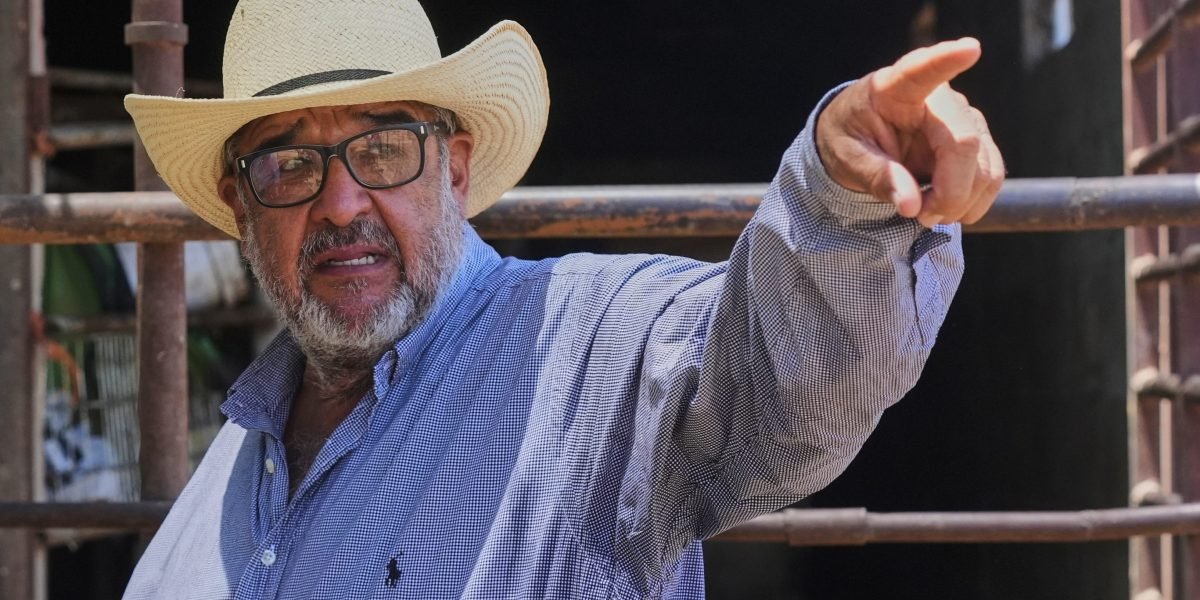
Tears of parasitic parasite in palpation

The United States struck the suspension of live livestock imports from Mexico in the worst possible time for Martin Ibara Vargas, who was hoping after two years of very drought that his family would be equal in the sale of his wheel across the northern border.
Like his father and grandfather in front of him, Ebara Vargas raised livestock on the dry soil of Sonora, the state in the northwest of Mexico, which is long -limit to the United States, especially Arizona. His family faced the punishment of drought before, but she had never had to deal with the economic blow of a new scourge: the new global software worm, a parasite that eats meat.
American agricultural officials Live livestock crossing the border in July stopped The third comment in the past eight months-due to concerns about Maggot, which was eating the meat that was It was found in southern Mexico The north crawls.
The spiral worm is the larva of the homminivorax fly that can invade the tissues of any warm animal, including humans. The parasite enters animal skin, causing severe damage and pests that can be fatal. Infected animals pose a serious threat to herds.
The US Department of Agriculture described it as a “devastating scourge” and said in June it was a threat to “our livestock industry, our economy, and our food supply chain.” In other steps, it has begun to remove it from the United States, which led to its eradication decades ago.
As part of its strategy, the United States is preparing Births of sterile flies are born And their release in Mexico and South Texas. the goal For males sterile to mate with females in the wild who do not produce any offspring.
The US ban also applies to live cattle to horses and bison imports. It has already struck the education sector by drought and specifically exporting livestock, which achieved $ 1.2 billion for Mexico last year. This year, Mexican livestock breeders exported less than 200,000 head of livestock, which is less than half of what they send historically in the same period.
For IBARRA VARGAS, which is a relatively small farm by standards that focus on Sonora beef, the inability to send its calf across the border made it rethink everything.
The repeated ban on Mexican cows by the authorities of his family prompted his family to branch beekeeping, raising sheep and selling cow’s milk. What he earns is just a small part of what he got by exporting live cattle, but he tries to stick to lean times.
“Tiempos de Vacas Flacas” – times of lean cows – as it calls.
“At least allows us to continue,” said 57 -year -old with a white cowboy hat on his head.
A reinvention to survive
Although Sonora’s livestock intensifies their efforts to ensure that the parasite fly does not reach their mandate, they had to search for new markets.
In the past two months, they sold more than 35,000 mature cows inside Mexico with a great loss.
“We haven’t been able to wait anymore,” said Juan Carlos Ochua, head of the regional cattle union in Sonora. He said that these sales came with “the price difference of 35 % lower compared to the value of the cow’s export.”
It is difficult in the stomach when the prices of beef in the United States rise.
The United States suspended livestock imports for the first time last November. Since then, more than 2,258 cases of spiral worm have been identified in Mexico. Treatment requires a mixture of manually removal of the maintenance, healing pests on cows and the use of anti -parasite medications.
Some livestock breeders also started sales of beef through the luxurious butcher stores referred to as “meat stores”.
There are other foreign markets, for example Japan, but the sale of closed meat slices in the Pacific Ocean is a completely different work from driving calves to American feed. The switch is not easy.
Undoubted future
Through the calves in which they wander as they escaped from one of the two sides of a small choir to the other waiting for nutrition, Ebara Vargas said that he still did not discover how he would survive for a long time from his inability to send it to the United States
The two -year -old drought reduced livestock stocks and forced him to take on debts to save the small family farm that has survived for three generations.
Juan Carlos Ania, director of the Consultative Agricultural Markets Group, has a 2 % decrease in livestock stock in Mexico last year to drought.
Anaya said that Mexican livestock breeders who are trying to make the United States separate what is happening in southern Mexico from cases of livestock export in the north where more strict health measures are taken, “but the damage has already happened.”
“We run out of time,” said Ebara Vargas, who is already regretted because his children are not interested in doing the work of the family. For a nanny, “he does not have a market or money to continue to feed his calf, it is a matter of time before saying:” You know what, as much as I go. ”
__
Sanchez of Mexico City mentioned.












Post Comment